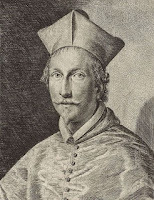Enzo Bearzot - World Cup-winning coach
Led Italy to 1982 triumph in Spain
Enzo Bearzot, the pipe-smoking coach who plotted Italy’s victory at the 1982 World Cup in Spain and at the same time changed the way the national team traditionally played, was born on September 26, 1927 in the Friuli-Venezia Giulia region of northwest Italy. Italy had a reputation for ultra-defensive and sometimes cynical football but in 44 years had won only one major competition, the 1968 European championships, a much lower-key affair than the current four-yearly Euros, which Italy hosted. But Bearzot, who was an admirer of the so-called ‘total football’ philosophy advanced by the Dutch coach Rinus Michels, with which the Netherlands national team reached two World Cup finals in the 1970s, albeit without winning. Italy did not impress at the start of their Spain adventure, recording three fairly lacklustre draws in their group matches, and were expected to be eliminated in the second group phase when they were obliged to play Argentina, the holders, and a Brazil side brimming with brilliant players. Bearzot and the team attracted scathing criticism in the Italian press. Read more…
________________________________________________________________
St Francis Basilica struck by earthquake
Historic artworks damaged in double tremor
The historic Basilica of Saint Francis in Assisi suffered serious damage on this day in 1997 when two earthquakes struck in the central Apennines. The quakes claimed 11 lives in the Assisi area and forced the evacuation of 70 per cent of buildings in the Umbrian town, at least temporarily, because of safety fears. Many homes were condemned as unsafe for occupation and residents had to be housed in makeshift accommodation. The event also caused considerable damage to frescoes painted in the 13th century by Giotto and to other important works by Cimabue, Pietro Lorenzetti and Simone Martini. The first quake, measuring 5.5 on the Richter Scale, struck shortly after 2.30am and was felt as far away as Rome, some 170km (44 miles) to the south. A series of smaller tremors kept residents on edge through the night. Yet the biggest quake, measured at 5.7 initially but later revised upwards to 6.1, was still to come. With tragic consequences, it occurred at 11.43am just as a party of Franciscan monks, journalists, town officials and experts from the Ministry of Culture had decided to venture inside the basilica to inspect the damage. Read more…
_________________________________________________________________
Anna Magnani - Oscar-winning film star
Roman one of only three Italians to land best actor award
Anna Magnani, who found fame for her performance in Roberto Rossellini's neorealist classic movie Rome, Open City and went on to become one of only three Italian actors to win an Academy Award, died on this day in Rome in 1973. She had been suffering from pancreatic cancer and her death at the age of just 65 shocked her fans and close friends. Rossellini, with whom she had a tempestuous affair before he ditched her for the Swedish actress, Ingrid Bergman, was at her bedside along with her son, Luca. The American playwright Tennessee Williams, who wrote the part of Serafina in his play The Rose Tattoo specifically with Magnani in mind, was so devastated he could not bring himself to attend her funeral. Instead he sent 20 dozen roses to signify the bond they developed while working together. When Williams was in Rome they would meet for cocktails on the roof-top terrace of her home, overlooking the city, always at eight o'clock - "alle venti" in Italy, where times are generally expressed according to the 24-hour clock. They would sign off letters and telegrams to one another with the words "Ci vediamo alle venti" or "See you at eight." Read more…
Home























